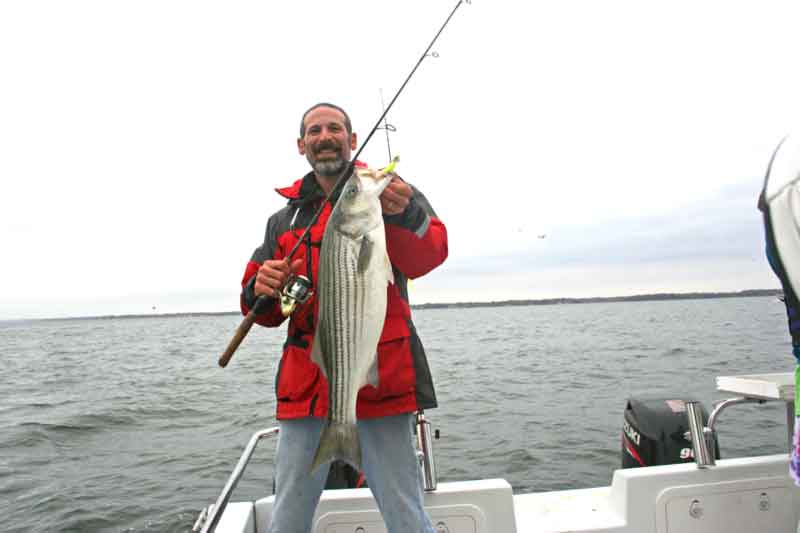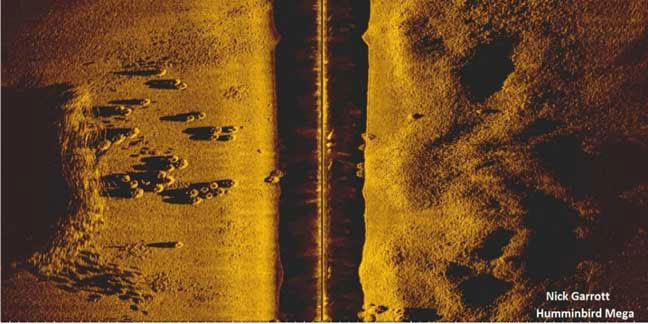Anyone who enjoys Chesapeake Bay fishing and saltwater fishing throughout the Mid-Atlantic region will want to know about the man-made fishing reefs in the Bay and along the coast. Many have been built through the years, both in Maryland (often by the Maryland Artificial Reef Initiative or CCAMD) and in Virginia waters (usually thanks to the Virginia Marine Resources Commission). We’ve covered a number of these in detail in FishTalk, especially in Wayne Young's many articles. In fact, we've amassed so many that it can be difficult to find one specific reef or another via our search bar. So, we compiled this Chesapeake Bay Fishing Reef guide. Follow these links to find the named reefs.
Artificial Fishing Reefs in Maryland
- Cedarhurst Fishing Reef
- Cedar Point/Patuxent River
- Fishing the Middle Potomac Shoals, Wrecks, and Rocks
- Holaga Snood (Eastern Bay)
- Lower Chester River Reefs
- Magothy River Reefs
- MIddle Bay Wrecks
- Poplar Island
- Rocky Spots in the Southern Middle and Northern Lower Bay
- Southern Maryland Mystery Reefs
- The Target Ships and Nearby Reefs
- Upper and Middle Bay Hotspots Update
Artificial Fishing Reefs in Virginia
- Angler's Reef (Onancock Creek Reef)
- Back River Fish Haven
- Cabbage Patch
- CBBT
- Cherrystone Reef
- Chesapeake Bay Enterance Fishing Structure Part I
- Chesapeake Bay Enterance Fishing Structure Part II
- DelMarVa (Chincoteague) Coastal Wrecks
- Mobjack Bay Reef
- Nandua-Pungoteague Fish Haven
- Nassawadox Reef
- Newport News Hotspots
- Northern Neck Fish Haven
- Occohannock Reef
- Parramore Reef
- Project Reef: East Ocean View
- Rudee Inlet Wrecks
- TARDA/Newport News/East Ocean View
- Tidewater Reefs (mouth of the Elizabeth and south CBBT)
- Triangle Wrecks
- Tower Reef
- The Cell
- The Cell (Expanded after change to ENC format exposed additional structure)
- The Chesapeake Bay Bridge-Tunnel
- Wolf Trap
- York Spit Reef
Fishing at Artificial Reefs

It’s true that fishing at artificial reef sites does involve a bit of modification to certain techniques, which mostly relate to avoiding snags. Many of the reef sites are built with things like concrete rubble, bridge sections, pipes, and other structures chock-full of snags, and if you fish them as you would smooth bottom, you’ll end up losing a ton of tackle. If you plan on some late fall or early winter light tackle jigging for stripers, for example, you’ll want to get close to the bottom where the rockfish often lay as chilly temperatures creep in. But bounce a jig along bottom at an artificial reef and you’ll usually get snagged in seconds. The solution? Drift next to, but not directly over, the reef itself.
Another way to avoid excessive snagging is to simply change techniques. Live-Lining and chumming is very effective at many of the reefs, and since you’ll be at anchor when employing either of these methods, snags are much less common.
Trolling for late summer and fall stripers can also be quite productive at the reefs, and snags will be few and far between just as long as you keep the lines high enough in the water column. Trolling for species like Spanish mackerel, bluefish, and sometimes near certain reefs even cobia can also be quite productive, and with few exceptions your lures will never be deep enough to snag bottom.
Finally, many people enjoy bottom fishing at the reef sites for a number of different species. In this case, drift fishing is rarely a good move unless you can position the boat to drift just next to, but not over, the structure. Anchoring up is usually a better bet. And if you can position the boat right over some reef balls or bridge sections, you may well encounter nonstop action from panfish like spot and croaker, catch a flounder or two, and who knows what else.

The bottom line? Artificial reefs are great places to fish. And here on the Chesapeake Bay, you have plenty of them to choose from.
Editor’s note: Many of our reef articles are excerpts from books by author Wayne Young. You can find his books, “Bridges Under Troubled Waters: Upper Chesapeake and Tidal Potomac Fishing Reefs,” and "Chesapeake Bay Fishing Reefs: Voyages of Rediscovery," at Amazon.com. You can find his Facebook page at Chesapeake Bay Fishing Reefs.
Sign up here to get the weekly FishTalk Chesapeake Bay and Mid-Atlantic fishing reports in your email inbox, every Friday by noon.
Editor's Note: This article is regularly updated to reflect the addition of new reef-specific posts. It was last updated May 10, 2024.